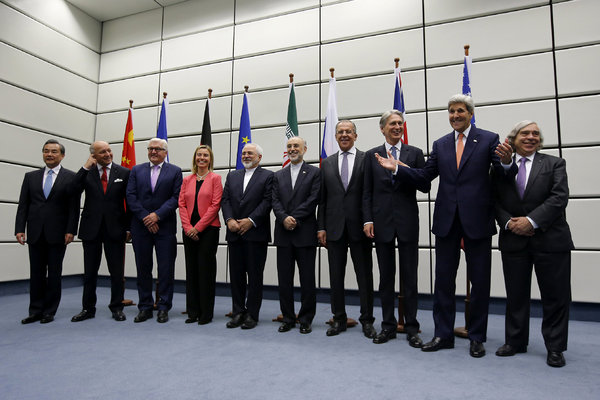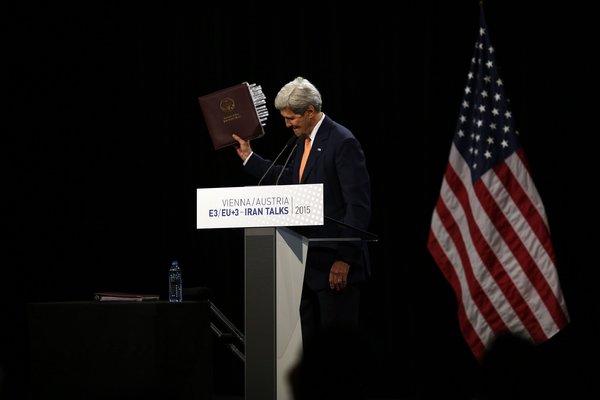
The old and dear Iran deal. Especially for us.
External Relations 27 July 2015Is the Iran deal actually a good deal? We would tell so due to a multiplicity of reasons, and one among the others is because we are European.
But let’s proceed slowly. What is all about the Iran deal?
A little background: The agreement unveiled on the 2nd of April in Lausanne fixed the general parameters of a plan that has been settled, aimed to redirect Iranian nuclear energy programs to peaceful and verifiable goals in exchange of a lifting of all the sanctions imposed on Teheran. Following its announcement, the U.S. government broadcasted a very detailed list of its demands, which immediately triggered Iran’s reaction, first and foremost through Ayatollah Ali Khamenei, who reinforced its red lines on the draft agreement on 23 June. The deal that finally comes out of the last round of talks in Vienna is, in a nutshell, an excellent mediation work that banished the fears of a new stalemate in Lausanne. The bulk of its provision remains unchanged: uranium-enrichment activities will be limited to a set phasing-down period and will be only allowed in a facility in the province of Natanz.
According to the US, Iran will finally reduce its reactors from around 19.000 to 6.014, keeping only 5.060 active reactors for the next 10 years. Furthermore, Iran should enrich up to 3,75% of its uranium only for energetic, medical and research goals, reducing its low-enriched stocks, mostly convertibles to military aims, from 10 tons to 300 kg. The subterranean site of Fordow that used to be a major enrichment site will be finally converted into a research facility.

Secretary of State John Kerry after a news conference on Iran nuclear talks in Vienna. Photo Credit: Carlos Barria/Agence France-Presse — Getty Images
The ultimate end of these measures is to prevent Teheran from building the bomb within just one year (the so-called breakout timeline). Further provisions should be identified to monitor if the deal will be actually implemented, for example by deploying IAEA observers as well. Iran is until now among the 21 States who have signed but not implemented Additional Protocol of the International Atomic Energy Agency (IAEA). This is one of the most controversial issues for the sustainability of the deal, since Teheran may question IAEA observers’ right to extend inspections also to military sites and to interview nuclear scientists.
EU will stop and USA will cease their sanctions only when Iran will finally implement all key provisions of the agreement. Here lies the crucial point and the very balance of the deal. Indeed, American and European sanctions will be only suspended after IAEA will issue the first implementation report and obviously sanctions will come back in force in case of non-fulfilment. Even though rejecting every sort of time-differentiated framework and asserting the non-independence of IAEA, Khameini has reached his goal with EU and US sanctions, while other restrictive measures of the international community should be reduced within a close timespan.
The UN Security Council will lift its own sanctions, but some restrictions will still be kept during the implementation phase. As it was foreseen for major powers’ restrictions, UN sanctions are also reversible. On July the 21st the UNSC unanimously approved a resolution to recognize the agreement reached in Vienna. Although it will not come into force in the next 90 days, some countries are already deepening their economic relations with Teheran.
A good deal especially for us. Strictly speaking, we can look at this event as one of the biggest results achieved by the European diplomacy in the post-Lisbon era. The European Union has proactively played its role of main negotiator through the successful convergence of the policies of its Member States. Not surprisingly, the first opinions are somehow divergent. On the one hand, the High Representative Mogherini (and so far the EU) is seen as the one who represented the capabilities of the European diplomacy and, through them, solved one of the most critical crisis of recent times. On the other, many authors remarked the overriding role of the inter-governmental level: great credit was given to Germany and France (the same actors of Minsk Summits), leaving the EU as just a ceremonial player. From the European point of view, this is not just a diplomatic success. The Iran Deal will open new opportunities for European citizens and, above all, the European industry.
According to an Iranian news agency, Germany will hold an economic summit with Iran later this summer with delegations from its top firms including Mercedes-Benz, Siemens, and Volkswagen. It will be the first bilateral economic conference since 2002, before the imposition of UN and European restrictive measures.The country hit hard by years of sanctions could hence see a foreign investment inflow if the Vienna Agreement will clear all the hurdles.
After his election in 2013, President Hassan Rouhani managed to bring down the inflation to 15% (from its average of 45%) and restored a growing trend for Iranian economy, which nonetheless very dependent on only one resource: oil. Many big oil firms, such ENI, Shell and Total, are now looking into Iran’s oil and gas opportunities, as a wide range of lucrative deals is showing up to them.
Moving to the USA, it was reported that Apple and even McDonald’s are looking for franchise-based business operations in the country. Major multinational corporations have already begun planning new or expanded business in Iran, where new sectors more “consumer-focused” like consumer electronics, luxury, FMCG (Fast-Moving-Consumer-Goods) and the leisure will provide the best opportunities in the short-run. However, producers struggle to provide the quality that middle-class Iranians seek, in part because they lack access to advanced technology. Some manufacturers have set off capital investments until they can resume purchases from European equipment makers but, clearly, Europe has to face competitors coming from China, Russia, Turkey, and United Arab Emirates, who still remain main commercial partners of Iran.
To back this new “New Deal” up, on Tuesday 28 July, the High Representative Mogherini will visit the Islamic Republic of Iran. At the end of the procedures to find the nuclear agreement, this new meeting will provide for sure new opportunities for the High Representative to keep on playing a coordinating role, now crucial in the regional and bilateral relations.


